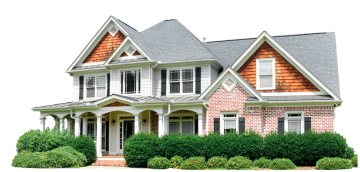Tuning your loft into a usable living space is already one of the smartest ways to add value to your property. But imagine taking it one step further, stepping out from your loft on to a private balcony to breathe in fresh air, and to enjoy uninterrupted views.
A loft conversion balcony doesn’t just elevate the look of your home, it can change the way you live in it. From enjoying a peaceful morning coffee to spotting scenic views, adding a balcony to your loft conversion can be a game-changer.
In this guide, we’ll break down everything you need to know, from the types of balconies suited for loft conversion, design inspiration, compliance rules and practical considerations to cost breakdowns. Here we go.
Key takeaways:
- A loft conversion balcony enhances natural light, ventilation and property value.
- There are different loft balcony options, from juliet to dormer and walk-out terraces.
- Compliance with UK planning and building regulations is essential before starting,
- A balcony addition typically costs more but offers significant lifestyle and resale benefits.
What is a Loft Conversion Balcony?
A loft conversion balcony is a structural or decorative addition to your converted loft space that allows access to fresh air, improved views and a sense of openness. It is a smart way to bring the outdoors into your loft, creating a bright and airy focal point at the top of your home.
If it’s the juliet railing framing, elegant french doors, or a small dormer platform you can step onto, a balcony can simply transform the loft from a simple room into a space that feels connected to outside.
Unlike ground level balconies, these are designed with extra attention to structure, waterproofing and regulations, ensuring they’re both beautiful and safe additions to your property.
Types of balconies better for loft conversions
It is not compulsory that each balcony type suits the loft conversion. So below, we bring the most common types for the homeowners in the UK to consider:
Juliet balcony loft conversion
A simplest and the most popular choice for the homeowners. A loft juliet balcony involves fitting full height french doors or sliding doors, protected by a metal or glass balustrade on the outside.
Well you can’t physically step out onto it, still, it gives a huge boost to natural light and ventilation. It’s ideal for loft bedrooms where space is limited or where structural changes are restricted by planning rules.
Dormer balcony
In a loft conversion dormer balcony, the balcony integrates within the structure of the dormer. The dormer extends vertically from the sloping roof, allowing space for a small deck or a standing platform with balustrades. This option blends well with existing architecture and is often more feasible than full roof terrace.
Roof terrace
If you have the right structure and permission, a walk-out roof terrace offers the most dramatic transformation. This involves flattering a portion of the roof and creating a proper deck with railings.
It’s perfect for homeowners who want outdoor seating or entertaining space, but it usually involves more engineering work and planning approvals.
Recessed balcony
A recessed balcony is built within the existing roof slope, creating a sheltered “cut-out” space. It maintains a streamlined roofline, offers privacy , and is often easier to get through planning compared to outward projecting balconies.
Learn More About Mezzanine Loft Conversion Here
Advantages of adding a balcony to your loft conversion
Adding a balcony to your loft not just enhances the aesthetic appeal, but it also includes some of the stand out benefits that could be:
- Large glazed doors and open spaces let in more daylight and keep the room fresh, which is especially valuable in loft bedrooms or home offices.
- A well-designed loft conversion with a balcony can significantly boost your home’s resale appeal or overall value. Buyers see it as a unique luxury feature.
- Even in urban settings, a balcony creates a mini sanctuary where you can enjoy fresh air without needing a garden.
- Balconies break up plain rooflines, adding depth and visual interest to your property’s exterior.
- From a quiet reading nook to plant filled retreat , balconies can be customised to match your lifestyle.
Inspirational Balcony Ideas for Loft Conversions
If you decide to add the balcony to your loft, remember it’s not just about adding the functionality, instead, it is an opportunity to inject personality and charm into your home. The right design can upgrade a simple loft into a statement space that blends indoor comfort with outdoor freshness.
Here are some inspiring loft conversion balcony ideas to spark your imaginations:
Corner wraparound balconies
If your loft spans a larger footprint, a corner wraparound balcony can make a stunning statement. Extending around two sides of the loft, it offers multiple viewpoints, and a unique architectural presence. This design works especially well with dormer conversion, giving the space a more open, penthouse-like feel.
Sliding wall to balcony concepts
Imagine sliding back an entire wall to reveal a compact balcony, almost like folding the indoors out. floor-to -ceiling glass sliders with a slim balcony or juliet railing creates a seamless flow between inside and outside, maximising natural light and making the loft feel more connected to its surroundings.
Mini outdoor lounges
Even a modest dormer balcony can be transformed into a tiny lounge with clever designs. Add waterproof cushions, slimline benches, or foldable furniture to create space where you can unwind in the open air without needing a large terrace. lighting and a couple of lanterns can make it magical at night.
Industrial style metal balconies
For lofts in urban or converted warehouse settings, industrial style balconies using black steel or powder coated frames create a bold, architectural statement. Paired with large Crittall style windows or doors, this look blends modern minimalism with gritty charm, perfect for contemporary city homes.
Canopy covered balcony
Adding a light canopy or pergola to a loft balcony creates a usable outdoor space in all weathers. No matter if it’s a retractable awning for flexibility or a fixed wooden canopy for shade, this idea brings functionality and style together.
Bay style protruding juliet balcony
Instead of a flat juliet, consider a subtle bay-style projection that extends slightly outward. This gives the illusion of a mini balcony, offering extra space for plants or decor while keeping the structure simple and planning-friendly.
Rooftop balcony platform
If your loft doesn’t allow for a conventional balcony at the dormer level, you can consider adding an external staircase to a rooftop platform. This creates a separate elevated terrace with panoramic view, ideal for homeowners who want a more private outdoor retreat.
Learn More About Terraced House Loft Conversion here
Safety and compliance for loft conversion balconies
Because balconies are elevated and exposed, they fall under strict UK planning and building regulations. These rules are in place not to complicate your project, but to keep your home safe, structurally sound and respectful of neighbours. Here is what you need to keep in mind:
Planning permission
For many homeowners, a juliet balcony can often be added under permitted development rights, meaning you may not need a full planning application. However, if you are thinking about a dormer balcony, or recessed terrace the story changes.
These designs usually alter the roofline, so local authorities will expect a formal application and may assess factors like design, privacy and the impact on neighbouring properties.
Balustrade registration
Balcony railings aren’t just decorative. They are your main safety barriers. UK building rules require balustrades to be at least 1.1 meters high, with gaps no wider than 100mm, so children or pets can’t slip through. Materials also need to be strong enough to withstand pressure and weather over time.
Structural strength
Because balconies project out from your home, they must be able to carry both their own weight and the weight of people using them. This often means adding steel beams or reinforced frameworks, along with careful waterproofing to protect the loft structure beneath.
Privacy & overlooking
Even a small balcony can raise privacy concerns. If it directly faces neighbouring gardens or windows, planning officers may push back. Thoughtful designs, such as positioning the balcony to the rear, adding frosted screens, or choosing a recessed style can help ease these concerns and improve your chances of approval.
Considerations for Adding a Balcony
Before jumping into balcony plans, it’s worth pausing to look at the bigger picture. A loft balcony can be a stunning addition, but getting it right means weighing up a few key factors carefully.
Each of these plays a role in how practical, affordable, and realistic your design will be:
- Is there enough room to step out without compromising the loft floor area?
- Some roof types may not easily accommodate terraces without significant work.
- Overlooking concerns can affect approval chances.
- Balconies add costs, not just for materials but for structural reinforcements and waterproofing.
- It requires ongoing care to keep railing, flooring and drainage in good condition.
Taking these factors into account ensures that the balcony enhances, rather than complicates your loft project.
Cost of Loft Conversion With Balcony
The cost of adding a balcony to a loft conversion varies depending on design, size, and structure:
| Type | Cost | Factors |
| Juliet balcony | £800-£2000 | Depends on glazing and balustrade design |
| Dormer balcony | £5000-£12000 | Material and structural changes |
| Recessed balcony | £8000-£15000 | Roof alteration and waterproofing |
| Walk-out roof terrace | £15000-£30000 | Complex engineering & planning |
These are broad estimates; actual prices vary by location, contractor, and finish level. While costs are higher than standard loft conversions, the value added to your property and lifestyle is substantial.
FAQ’S
It is popular because it does not require large structural changes and often fall under permitted development rights. It floods the loft with natural light and fresh air, making the space feel bigger without the cost of a full balcony.
Juliet balconies usually don’t need the planning permission, if they don’t project outward. But walk-out, dormer or recessed balconies almost always require the permission. So, always check with your local council or planning authority before starting.
Yes, in fact, dormer balconies are one of the most practical ways to add usable outdoor space to a loft. By extending the dormer, you can create a small but functional platform that blends with the roof structure.


 Describe your needs
Describe your needs
 it only takes 30 seconds
it only takes 30 seconds